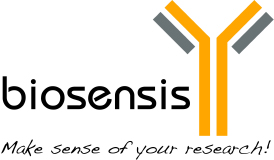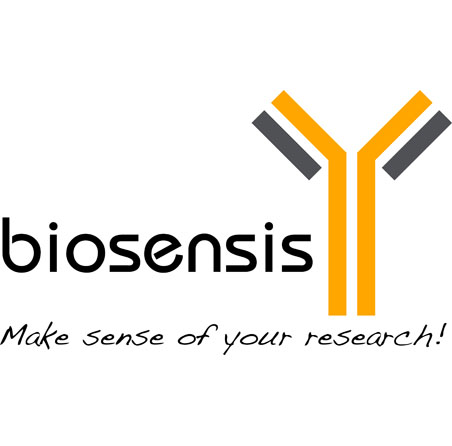Fluoro-Jade B (FJB) Powder for identifying Degenerating Neurons
- Product Name Fluoro-Jade B (FJB) Powder for identifying Degenerating Neurons
-
Product Description
The causes and effects of neuronal degeneration are of major interest to a wide variety of neuroscientists. Paralleling this growing interest is an increasing number of methods applicable to the detection of neuronal degeneration. The fluorescent dye Fluoro-Jade B (FJB), like its more purified brother Fluoro-Jade C (FJC), is an anionic fluorescein derivative useful for the histological staining of neurons undergoing degeneration. Fluoro-Jade B differs from FJC in that it is a slightly less refined chemical formulation and thus it does not quite provide the same level of signal to noise or high resolution as FJC. Nonetheless FJB is still widely used and works very well as a marker of degenerating neurons and even glia (see Damjanac M et al., Brain Res. 2007;1128(1):40-9). FJB operates nearly identically in protocol to that of FJC, and Fluoro-Jade B is compatible with several other labeling procedures including immunofluorescent and fluorescent Nissl techniques. Fluoro-Jade B stains all degenerating neurons regardless of specific insult or mechanism of cell death. Fluoro-Jade B exhibits the greatest signal to background ratio, as well as the highest resolution. This translates to a stain of maximal contrast and affinity for degenerating neurons. This makes it ideal for localising not only degenerating nerve cell bodies but also distal dendrites, axons and terminals. The dye is highly resistant to fading and is compatible with virtually all histological processing and staining protocols.
Note: This product is equivalent to discontinued product AG310 from Merck-Millipore. - Alternative Names FJB, Fluoro-Jade
- Application(s) FC, ICC
- Specificity Degenerating neurons, and neuronal degeneration. There is no specific staining in normal healthy brain. Note: Some researchers under some conditions report blood vessel staining with Fluoro Jade. This may be because Fluoro Jade is an analogue of eosin (which stains blood cells). In general, good perfusion and preparation of the tissue should help prevent blood vessel staining but it may not be possible to eliminate it entirely. In our experience it is generally possible to distinguish neuronal from blood vessels staining by eye.
- Species Reactivity Human, Mouse, Other Mammals (Predicted), Rat
- Purity Description Thin layer chromatograpy using cellulose plates and a solvent system of n-propinol, water, and ammonium hydroxide (6:5:2) revealed the presence of two fluorescent isomers and two trace non-fluorescent bands. No amount of fluorescein or Fluoro-Jade was present.
- Regulatory Status For research use only.
Product Info
-
Product Description
The causes and effects of neuronal degeneration are of major interest to a wide variety of neuroscientists. Paralleling this growing interest is an increasing number of methods applicable to the detection of neuronal degeneration. The fluorescent dye Fluoro-Jade B (FJB), like its more purified brother Fluoro-Jade C (FJC), is an anionic fluorescein derivative useful for the histological staining of neurons undergoing degeneration. Fluoro-Jade B differs from FJC in that it is a slightly less refined chemical formulation and thus it does not quite provide the same level of signal to noise or high resolution as FJC. Nonetheless FJB is still widely used and works very well as a marker of degenerating neurons and even glia (see Damjanac M et al., Brain Res. 2007;1128(1):40-9). FJB operates nearly identically in protocol to that of FJC, and Fluoro-Jade B is compatible with several other labeling procedures including immunofluorescent and fluorescent Nissl techniques. Fluoro-Jade B stains all degenerating neurons regardless of specific insult or mechanism of cell death. Fluoro-Jade B exhibits the greatest signal to background ratio, as well as the highest resolution. This translates to a stain of maximal contrast and affinity for degenerating neurons. This makes it ideal for localising not only degenerating nerve cell bodies but also distal dendrites, axons and terminals. The dye is highly resistant to fading and is compatible with virtually all histological processing and staining protocols.
Note: This product is equivalent to discontinued product AG310 from Merck-Millipore. -
Related Products
Fluoro-Jade C (FJC) Powder for identifying Degenerating Neurons
- Application(s) FC, ICC
- Application Details Following our detailed protocol, Fluoro-Jade C labels degenerating neurons which are visualised with blue light excitation, while DAPI (not included) counter stains cell nuclei, visualised with ultra-violet illumination. The Fluoro-Jade C dye can be used on all kinds of preserved tissues, including fresh-frozen, paraformaldehyde or formalin fixed, and formalin fixed, paraffin-embedded tissues.
- Target Degenerating neurons
- Specificity Degenerating neurons, and neuronal degeneration. There is no specific staining in normal healthy brain. Note: Some researchers under some conditions report blood vessel staining with Fluoro Jade. This may be because Fluoro Jade is an analogue of eosin (which stains blood cells). In general, good perfusion and preparation of the tissue should help prevent blood vessel staining but it may not be possible to eliminate it entirely. In our experience it is generally possible to distinguish neuronal from blood vessels staining by eye.
- Target Host Species Species Independent
- Species Reactivity Human, Mouse, Other Mammals (Predicted), Rat
-
Ex/Em Max
FJB visualization is accomplished using blue light or a 488 nm Laser.
Excitation Peak: 495 nm
Emission Peak: 521 nm
Filter system for visualizing: Fluorescein/FITC - Detection Method Fluorescence
-
Kit Components
Materials Provided:
30 mg Fluoro-Jade B, dry powder
Detailed protocol
Equipment and Reagents Required:
Distilled water
ACS grade Ethanol (200 proof) for slide & solution preparation
1% sodium hydroxide in 80% ethanol (basic alcohol solution)
0.1% Acetic Acid solution (in water)
70% ethanol in distilled water
0.06% (KMnO4) potassium permanganate solution
DAPI powder or 100X solution (working range is 0.5-5 µg/mL)
Xylene liquid
Staining dishes/Coplin jars
Cover slips
DPX mounting media or another permanent mounting medium. Non-polar media are preferred over aqueous mounting media such as glycerin/water to obtain high- contrast images (refer to Appendix B in the protocol for a comparative analysis). Traditional fluorescent mounting mediums are not recommended because of their high pH.
Slide warmer
Convection oven - Purity Description Thin layer chromatograpy using cellulose plates and a solvent system of n-propinol, water, and ammonium hydroxide (6:5:2) revealed the presence of two fluorescent isomers and two trace non-fluorescent bands. No amount of fluorescein or Fluoro-Jade was present.
- Format Dry, Coffee brown to brick red powder; hygroscopic powder keep dessicated.
- Reconstitution Instructions Spin vial briefly before opening. See product protocol for detailed use instructions.
- Storage Instructions The powdered dye can be stored desiccated at room temperature in the dark. Storage in a desiccator is recommended as FJB is hydroscopic. The 0.01% stock solution will remain stable for 3 months when stored in a refrigerator, in the dark. The 0.0001-0.0004% working solution in 0.1% acetic acid should be used within 4 hours of preparation. Diluted FJB dye solutions are not stable and should not be stored. The other diluted solutions can be reused and stored for up to 48 hours if refrigerated and protected from light. Best results require freshly diluted solutions.
- Batch Number Please see item label.
- Expiration Date 6 months after date of receipt (unopened vial).
- Alternative Names FJB, Fluoro-Jade
- Shipping Temperature 25°C (ambient)
- UNSPSC CODE 60103920
- Regulatory Status For research use only.
Specifications
-
Specific References
Yang Y et al. (2023) "Crebanine ameliorates ischemia-reperfusion brain damage by inhibiting oxidative stress and neuroinflammation mediated by NADPH oxidase 2 in microglia" Phytomedicine. ; [Epub ahead of print]; Application: IHC/IF Species: Rat
Hua W et al. (2023) "Intracerebral Hemorrhage‐Induced Brain Injury: the Role of Lysosomal‐Associated Transmembrane Protein 5" Mol Neurobiol. ; [Epub ahead of print]; Application: IHC/IF Species: Mouse
Qi Z et al. (2023) "M1-Type Microglia-Derived Extracellular Vesicles Overexpressing IL-1R1 Promote Postoperative Cognitive Dysfunction by Regulating Neuronal Inflammation" Inflammation. ; [Epub ahead of print]; Application: IHC/IF Species: Mouse
Zhang SN et al. (2023) "Eucommiae Folium and Active Compounds Protect Against Mitochondrial Dysfunction-Calcium Overload in Epileptic Hippocampal Neurons Through the Hypertrophic Cardiomyopathy Pathway" Neurochem Res. ; [Epub ahead of print]; Application: IHC/IF Species: Mouse
Liu Y et al. (2023) "Loureirin C inhibits ferroptosis after cerebral ischemia reperfusion through regulation of the Nrf2 pathway in mice" Phytomedicine. ; [Epub ahead of print]; Application: ICC/FC Species: Mouse
Zhou C et al. (2022) "Gain-of-function of progesterone receptor membrane component 2 ameliorates ischemic brain injury" CNS Neurosci Ther. ; [Epub ahead of print]; Application: ICC/FC Species: Mouse
Ikeda A et al. (2022) "Alteration of the neuronal and glial cell profiles in Neu1-deficient zebrafish" Glycoconj ; [Epub ahead of print]; Application: ICC/FC Species: Zebrafish
Choi I et al. (2022) "Interleukin-17A Mediates Hippocampal Damage and Aberrant Neurogenesis Contributing to Epilepsy-Associated Anxiety" Front. Mol. Neurosci. ; [Epub ahead of print]; Application: ICC/FC Species: Mouse
Cui Y et al. (2022) "Modified Citrus Pectin Alleviates Cerebral Ischemia/Reperfusion Injury by Inhibiting NLRP Inflammasome Activation via TLR4/NF-ĸB Signaling Pathway in Microglia" J Inflamm. Res. ; 15: 3369-3385; Application: ICC/FC Species: Mouse

 1800 605-5127
1800 605-5127 +61 (0)8 8352 7711
+61 (0)8 8352 7711
